Sacred ficus: rules for growing and care
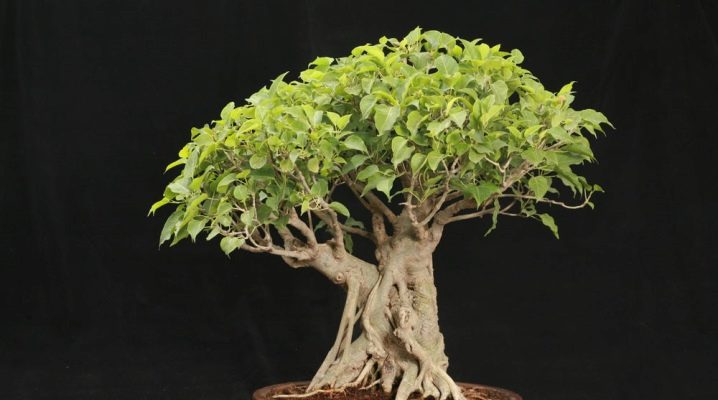
It is not even a flower that is called a sacred ficus, but a real tree. This species is part of the mulberry family and in its natural habitat can reach 20 meters in height, or even more. Record-breaking trees of this species sometimes reach 30 meters.
A feature of the sacred ficus (or religious - this is its second name) is that the tips of its leaves are covered with small droplets of water when the humidity rises. For this plant received the name "weeping tree". However, there is no miracle in this phenomenon, it has a logical scientific explanation, it is called guttation.
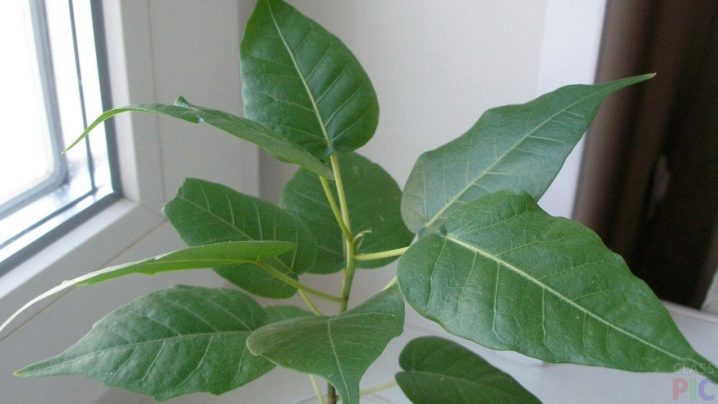
Plant features
The legend of how the religious ficus appeared is very beautiful: it was under this plant that the Indian prince Gautama was granted enlightenment, whom the whole world now knows under the name of Buddha. This species of the mulberry family is very viable and has an exceptional lifespan.
Of course, in a closed room with walls and a ceiling, a twenty-meter tree cannot be grown, and this is useless. Especially for the premises, a room culture was brought out, which received the name "sacred Eden". It looks the same as a religious ficus, only much smaller in size. The bark on the trunk has a gray tint, the leaves are dense, bright green, heart-shaped, with a pointed angle.
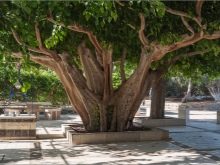
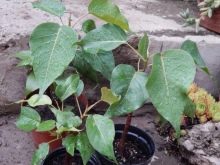
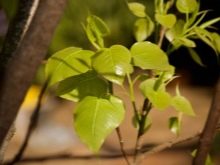
The crown should be formed with the participation of a grower, otherwise the ficus grows chaotically, especially during the period of intensive growth.
Care rules
This type of mulberry family does not need special care if grown indoors. He strong and resilient, however, there are a number of rules that will need to be followed in order for it to remain so. No matter how persistent and strong the plant may be, with improper care or the complete absence of such, it will lose its vital qualities.
Therefore, in order for the sacred ficus, bred at home, to delight you with bright green leaves and an overall healthy look, certain rules must be observed when growing it.
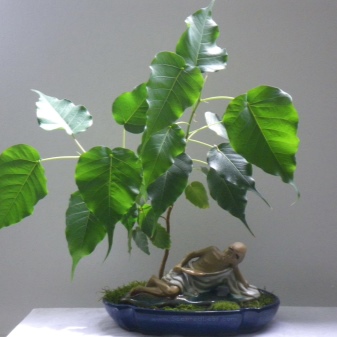

Lighting
Direct sunlight is not suitable for the ficus, it needs bright, but diffused lighting... If the choice is between direct sun and light shading, it is better to stay with the latter option. If the ficus needs additional light, it will immediately make it clear by falling leaves.
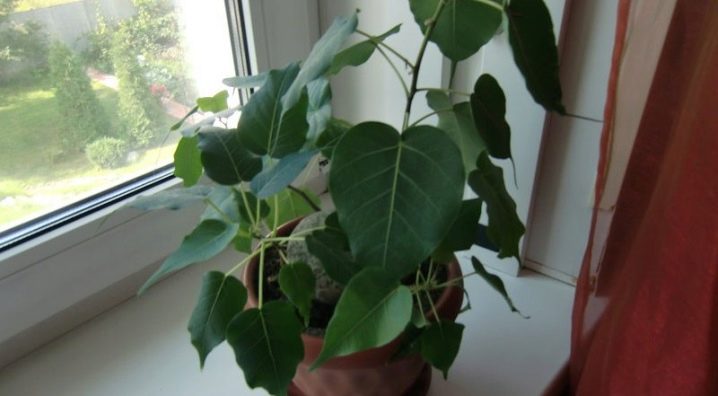
Air temperature and humidity
For sacred ficus, the optimum moisture level is slightly increased. Therefore, if your apartment is dry, you will have to think over the air humidification system either by means of special units, or by placing containers with water next to the plant. As soon as the ficus becomes too dry, the leaves begin to fly off from it.
A specific air temperature is also required: in the range from +20 to +25 degrees Celsius. In winter, the bar is slightly reduced, but it should not go beyond +15 degrees. For the sacred ficus, development is characteristic throughout the year, for the winter it does not go into a state of dormancy, which is why the conditions for its maintenance should be approximately the same all year round.
Overheating for this plant is also unfavorable, therefore, it should not be placed next to central heating batteries and heaters.
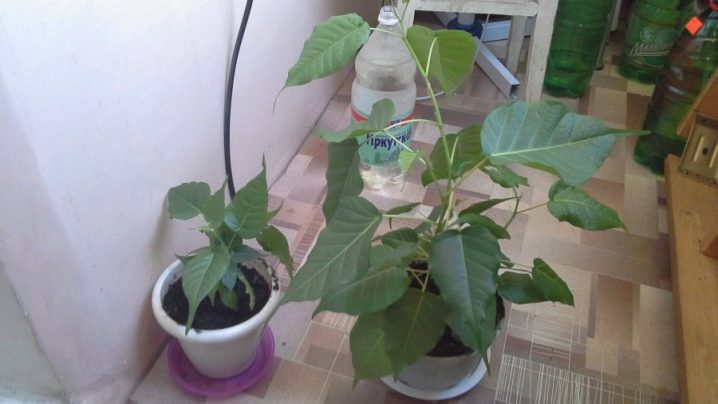
Watering
The sacred ficus needs regular watering, as he is unusually hygrophilous... However, when carrying out intensive watering, one should not forget about controlling soil moisture - its level should not be excessive. Each subsequent watering should be done only when the topsoil dries up.
Ficuses are watered only with water at room temperature, while the water must be purified or at least settled. It is better to use filtered water for watering this species, especially during the period when the plant is intensively developing.

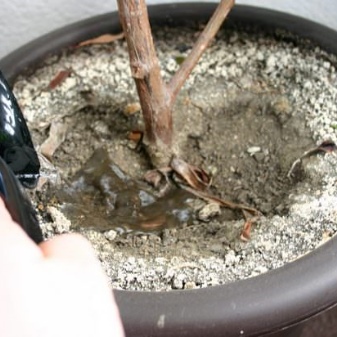
Soil and fertilizer
Ficus religious needs both organic and mineral fertilizers, which are applied in turn. Better to buy ready-made mixtures and dressings... You need to fertilize the soil in which Eden grows every two weeks. Thus, once a month the plant will receive organic feeding and once a mineral.
In order for the ficus to grow comfortably, a special soil is needed. with an acidity level of at least 6 on the pH scale. You can buy such a primer at a flower shop or make your own. If you do not want to buy soil, then you need to take it from the natural environment. For this leaf, peat and turf soils and coarse sand are mixed, all in equal proportions.
It is imperative to form a thick drainage layer at the bottom of the pot so that water does not stagnate in the soil. For drainage, you can take stones, expanded clay, pumice, vermiculite, broken red brick, or even pine bark. And, of course, there must be drainage holes in the container in which the ficus will grow.


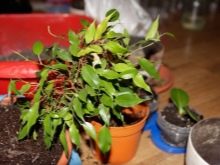
Trimming and shaping
Pruning young shoots must be done in order for the ficus to form a beautiful, lush crown. Simultaneously this procedure restrains his excessive growth... The pruning procedure must be carried out immediately before the tree begins to grow intensively, and after that pinching the ends of the shoots is enough.
Instead of pruning the shoots, you can shape the crown of the ficus in a different way. Young branches have great elasticity, therefore, using a special wire frame, you can set each of them in the direction you need.
If it turns out that you have three or more ficuses growing in one pot, you can resort to weaving branches. While their trunks are young and flexible, they are braided into a braid, and in the future, crown formation occurs not for one, but for several plants in one.

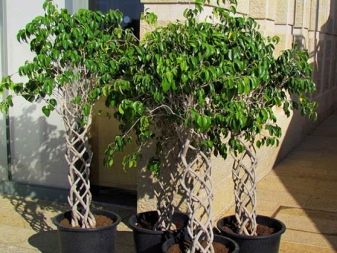
Transfer
The religious ficus is characterized by rapid growth. Therefore, transplantation is a topic that is very relevant for him. About once a year the plant needs to be transplanted into a container larger in area than the previous one. The main indicator for transplantation is that the root system becomes cramped in the pot.
As soon as the ficus has grown, it is no longer necessary to transplant it, but periodic soil replacement will have to be done.
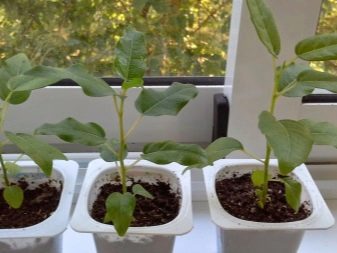
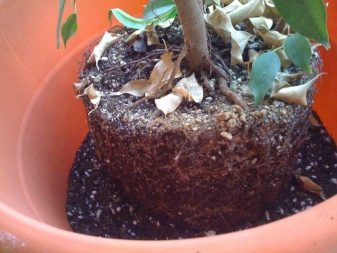
Reproduction methods
For this type of ficus, reproduction is possible both by seeds and by cuttings... The first method is most common among florists. Each seed package contains the sowing rules to be followed. Seedlings appear in about a week.
In order for the sacred "Eden" to sprout from seeds, you need to sow them in a mixture of sand and peat, watered just before sowing. At the end of sowing, the pot is covered with transparent cellophane so that the light hits the ground. During the entire germination time, a constant temperature should be maintained above +25 degrees.
Light and air circulation must be intense. If the soil dries up, you cannot water it - you need to spray it with a spray bottle. It must contain purified water.


In addition to using seeds, religious ficus can be propagated by cuttings. However, this method has a huge drawback - a low percentage of seedlings rooting. It takes 2 to 5 weeks for a seedling to take root.
For propagation by cuttings, you need to prepare seedlings and process the cut of each with a composition that stimulates root growth.After the cuttings are ready, they are planted in a mixture of sand and peat and covered with transparent cellophane. Whether the seedlings have taken root or not, it will become clear no earlier than in 2 weeks.
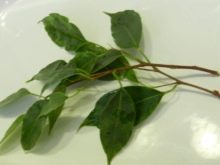
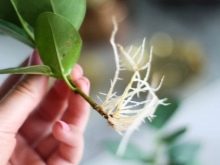
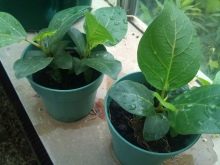
Diseases and pests
If a plant does not have enough moisture in the air in the room in which it grows, it instantly falls into the "net" aphids, mealybugs, scale insects and spider mites... In order to competently and effectively fight insects, you need to treat the ficus twice with special means.
However, one should not rush to excessively humidify the air. - dampness is no less dangerous for the ficus of religion than dryness. As soon as there is a lot of moisture in the air, root rot processes arise and develop. Noticing this in a timely manner, you urgently need to transplant the plant into another soil and container, treating it with fungicides.
The pot in which it grew earlier should be thoroughly rinsed, dried, and the soil should be disposed of, in no case should it be dried and another plant should be planted.

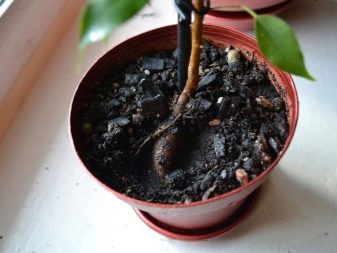
Tips & Tricks
By the appearance of the ficus, it is easy to guess that it is dissatisfied with the environment in which it grows: as soon as something is not to his taste, he begins to shed the leaves.
- Excess sunlight (especially direct rays) causes burns on the leaves in the form of dark brown spots. At the same time, the leaf itself acquires a dry border. If there is little light for the ficus, this is also obvious: its leaves become small, young shoots become pale and weak.
- Processing ficus with special compounds from pests, all necessary precautions must be taken to avoid poisoning both yourself and the rest of the family with pesticides. It is best to do this on the balcony, loggia, in a room that can be well ventilated at the end of the processing procedure.
- It should be remembered that leaf fall in religious ficus, it can also have a natural character, because their life span is from two to three years. Therefore, if your "sacred Eden" has sharply dropped the foliage, but looks completely healthy and, moreover, releases new healthy leaves and shoots, you should not sound the alarm. If all the conditions for caring for him are met, then, most likely, such a leaf fall is a temporary and passing phenomenon.


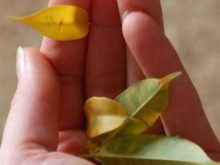
In most cases, the ficus gets sick as soon as the rules for caring for it are violated. This should not be allowed, since many changes in plant health are irreversible and it is not as difficult to ruin a perfectly healthy flower as it seems.
The following video will tell you how to choose a ficus, grow it and care for it.































The comment was sent successfully.